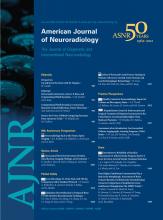We thank Drs Carter and Lehman for their valuable comments on our article.
We assessed whether we could reliably use MR imaging to determine if brain arteriovenous malformations (bAVM) were obliterated after radiosurgery. Because obliteration is the “new” event during follow-up, our raters were specifically asked to look for obliteration, not for the presence of a patent nidus. Given this question, it was logical to define obliteration as a positive event, though we are aware that obliteration is absence, not presence, of disease.
To make binary decisions, we combined the groups named Probable Obliteration (PO) and Patent in our Table 3. This would have resulted in Table 3X, which was not published in the original paper1:
Determination of nidus obliteration on MRI2
Next, we did indeed make a mistake and used MR imaging as the reference data for DSA. We regret our error and made a correction, which was published in the April 2012 issue of the American Journal of Neuroradiology.2
The corrected Table 4 is shown below:
Predictive value of MRI2 for DO in comparison with DSA2C
Regarding the second teaching point, we agree with Carter and Lehman's remarks. As stated in the patient-selection criteria in the paper, we included every patient who underwent radiosurgery for a bAVM in our institution and who was subjected to MR imaging and DSA before and after radiosurgery in the aforementioned sequence.1 It is, therefore, likely that our data are “enriched” with reference standard–positive cases because bAVMs tend to obliterate after radiosurgery, and most DSAs in our study were performed for the purpose of demonstrating obliteration, suggesting that the prevalence of obliterated bAVMs among our study group was high. However, in general, progressive obliteration should be a characteristic of a population of patients with bAVMs a few years after radiosurgery. We agree that readers should always interpret study results in the context of the inclusion and exclusion criteria.
References
- © 2012 by American Journal of Neuroradiology







